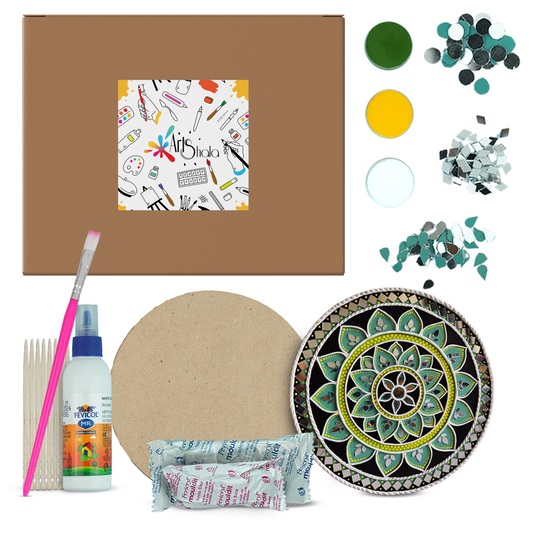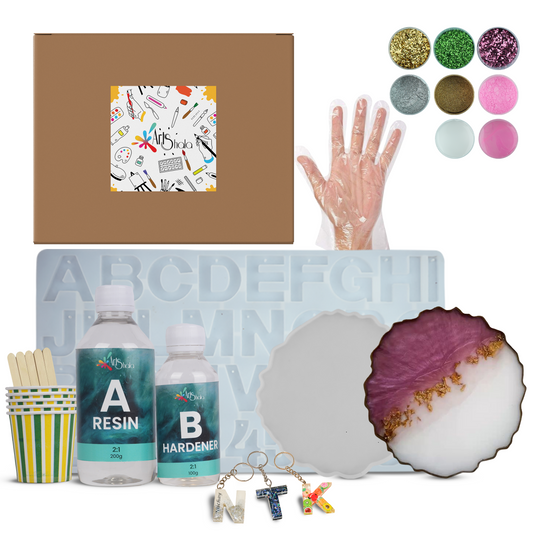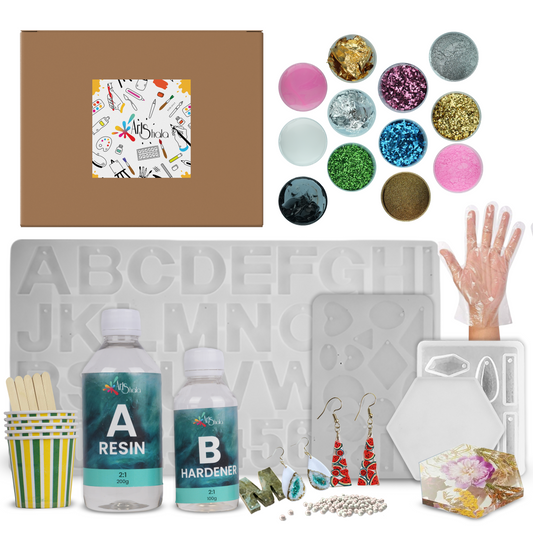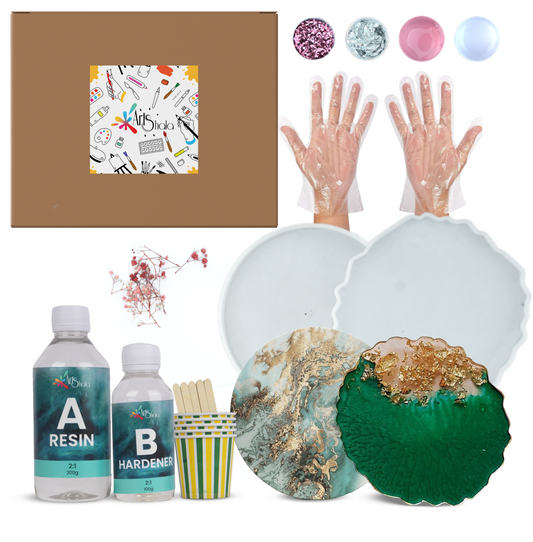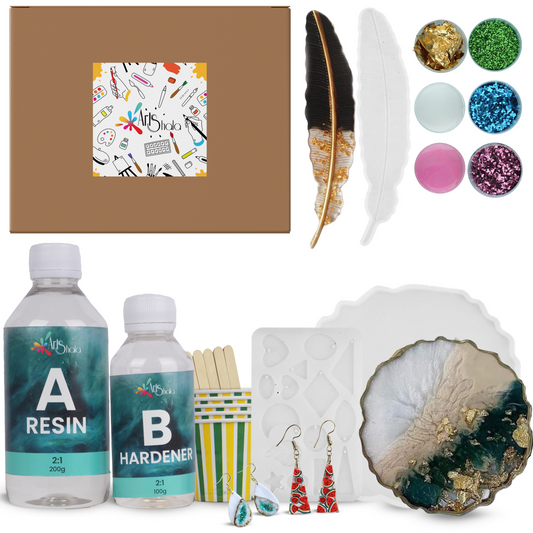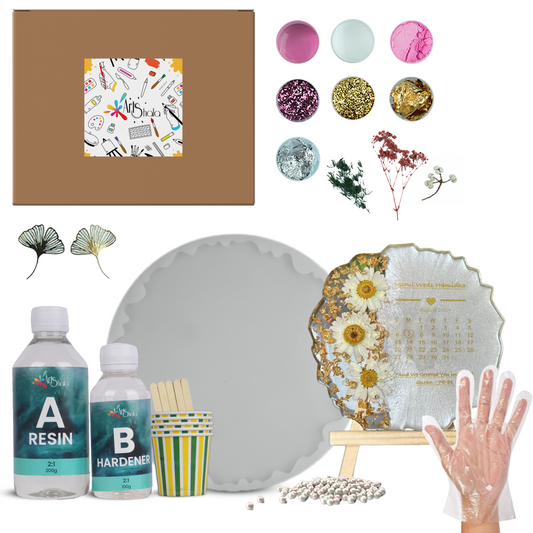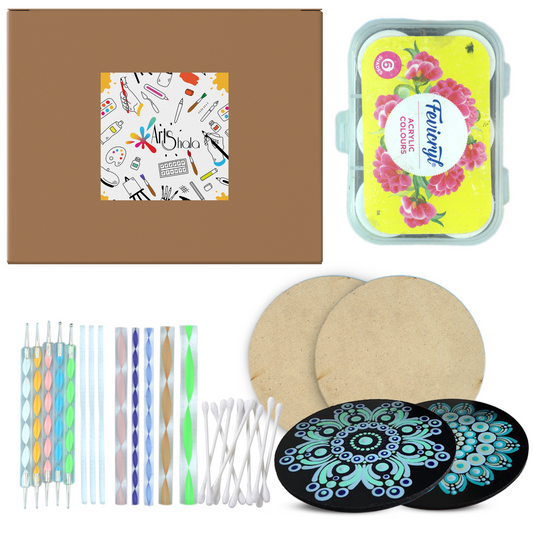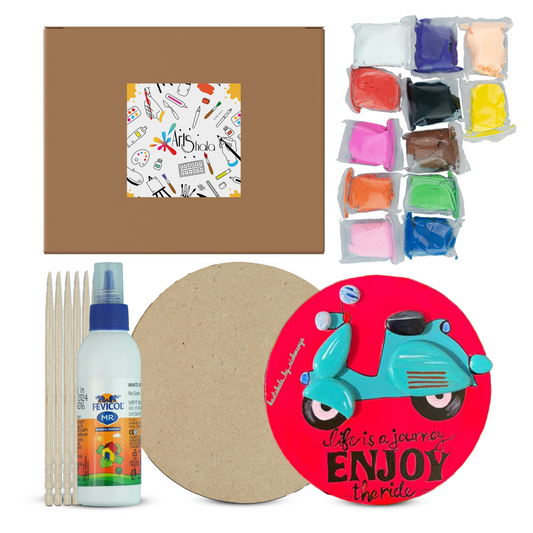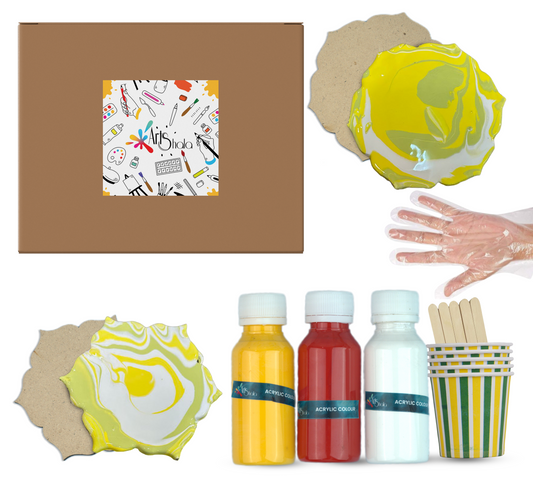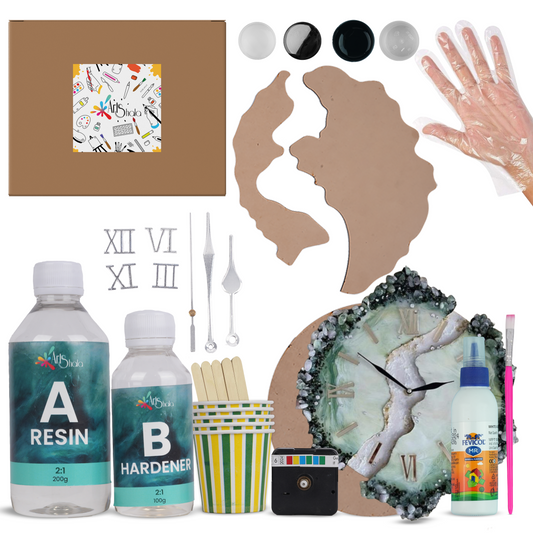The Best Surfaces for Resin Artwork and Pouring
Resin artwork and resin pouring have recently become extremely popular in the art world. This technique involves using resin as a medium to create beautiful, shiny finishes on different surfaces. Many artists and art enthusiasts love resin art because it allows them to be very creative. To learn more, consider joining an online resin art course and learn from experienced artists.
Why Choosing the Right Surface Matters?
The surface you use is very important when working with resin because it affects how your artwork will turn out. Different surfaces react differently to resin, which can change how the final piece looks and feels. Things like how much resin gets absorbed by the surface, the texture of the surface, and how durable it is all make a difference in how well your resin art project turns out.
The Best Surfaces for Resin Artwork and Pouring
When it comes to resin artwork and pouring, choosing the right surface is crucial for achieving the desired results. Different surfaces can offer unique textures, effects, and durability, so it's essential to consider your artistic vision and preferences. No matter which surface you select, it's crucial to ensure that it is clean, dry, and dust-free before applying resin. Proper surface preparation will help the resin stick well and result in a professional-looking finish. Here are some of the best surfaces to use for resin artwork:
Canvas
Canvas is a popular choice among resin artists due to its versatility and texture. It provides a flexible surface that allows for movement and creates interesting patterns when combined with resin. You can use both stretched canvas and canvas panels for your artwork.
Cradled Birch Panels
Birch panels with cradled edges are another excellent option for resin artwork. These panels are sturdy and provide a smooth surface for pouring resin. The cradled edges add depth to your artwork and make it ready to hang without the need for framing.
Wooden Artist Panels
Wooden artist panels offer a firm surface that is ideal for resin pouring. They come in various thicknesses and can withstand the weight of multiple layers of resin without warping. These panels also have smooth surfaces that allow the resin to flow evenly.
MDF Board
Medium Density Fiberboard (MDF) is a cost-effective alternative to traditional wooden panels. It has a smooth surface that works well with resin, allowing for beautiful, glossy finishes. MDF boards are available in different sizes and can be easily primed before applying resin.
Vinyl Records
If you're looking for a unique surface with character, vinyl records can be an exciting choice for resin artwork. The grooves on the record create interesting patterns when combined with resin, resulting in a visually appealing piece of art.
Tile
Tile surfaces provide a sleek and modern look to resin artwork. They are often used as coasters or small decorative pieces. The smooth surface of the tiles allows the resin to spread evenly, creating a glossy and vibrant finish.
These surfaces offer different textures, effects, and finishes, allowing you to explore various artistic possibilities. It's important to note that not all surfaces are created equal, and some may require additional preparation before pouring resin.
How to Use Different Surfaces for Resin Artwork and Pouring?
Resin artwork and pouring can be a fascinating and rewarding creative process. Whether you are a beginner or an experienced artist, it is essential to understand how to use different surfaces for resin art to achieve the best results. Here, we will explore the preparation process for various surfaces and discuss different techniques to try when painting with resin.
Priming Canvas or Panels
Proper priming is crucial if you use canvas or cradled birch panels for your resin artwork. Priming helps seal the surface and provides a smooth base for the resin to adhere to. Here's a step-by-step process for priming:
- Start by cleaning the surface with water and mild soap to remove small dirt or dust particles.
- Once dry, apply a thin layer of gesso using a brush or roller. Gesso acts as a primer and creates a barrier between the canvas/panel and the resin.
- Let the gesso dry completely before proceeding with your resin pour.
Sanding and Sealing Wooden Surfaces
Wooden surfaces like MDF board or cradled birch panels require additional preparation steps compared to canvas. Here's what you need to do:
- Begin by sanding the wooden surface gently with fine-grit sandpaper. This step helps create a smooth texture and removes any rough areas.
- After sanding, wipe away the dust particles using a clean cloth.
- Next, seal the wood using an appropriate sealer or varnish to prevent the resin from soaking into the wood fibers.
- Follow the manufacturer's instructions regarding drying time before moving on to the resin application.
Preparing Unconventional Surfaces like Vinyl Records or Tile
Resin artwork is not limited to traditional surfaces like canvas or panels. You can also experiment with unconventional surfaces like vinyl records or tiles to create unique pieces. Here are some tips for preparing these surfaces:
- Clean the surface properly to remove any dirt, grease, or adhesive residue.
- If the surface is porous, consider applying a layer of primer or sealer to prevent the resin from being absorbed.
- For vinyl records, it's important to note that they are not heat-resistant. Avoid placing hot objects on the finished artwork.
Read Also - Resin Vs Polymer: What Is The Difference Between Resin And Polymer
Different Techniques of Resin Art on Different Surfaces
Now that you have prepared your surface and gathered your supplies, let's explore some techniques you can try when painting with resin on different surfaces:
- Layering and Mixing Colours on Canvas or Panels: Create depth and dimension by layering different colours of resin. You can pour multiple layers, allowing each one to cure partially before adding the next. This technique allows you to build up complex designs and achieve stunning visual effects.
- Achieving Unique Effects on Vinyl Records or Tile: Unconventional surfaces like vinyl records or tile offer exciting possibilities for resin art. Experiment with different pouring techniques such as dirty pours, swipe techniques, or using a heat gun to create mesmerising patterns and textures.
Read Also - Things You Should Know As A Beginner
Conclusion
Try out different surfaces mentioned in this article and explore your favourites for resin art projects. Each surface offers unique characteristics that can add depth and creativity to your artwork. The surface you choose can greatly impact the final result of your resin artwork. Embrace the process of experimentation and enjoy the endless possibilities that resin art has to offer.
For further guidance and inspiration, consider joining Arts Shala to delve deeper into the world of resin art. Contact Us today to access expert tips, tutorials, and a community of fellow artists to enhance your resin art journey.
Frequently Asked Questions
Does Resin Stick to Aluminum?
Resin can stick to aluminium, but proper surface preparation is essential for a strong bond. To prepare aluminium for resin, start by cleaning the surface thoroughly with a metal degreaser to eliminate dirt, oil, and other contaminants. Next, roughen the aluminium using sandpaper, a wire brush, or chemical treatment to create texture, which helps the resin grip the surface more effectively. Before proceeding, testing the treatment on a small, inconspicuous area is important to ensure it doesn’t damage the aluminium. Once the surface is prepared, apply the resin as soon as possible to maximize adhesion and achieve the best results.
Can We Use Resin on Canvas?
Yes, resin can be used on canvas to create stunning art pieces, as it provides a glossy, professional finish to paintings, photographs, and other works. To use resin on canvas, start by preparing a clean, dust-free workspace to ensure a smooth application. Place a plastic sheet underneath the canvas to catch any spills or drips. Next, mix the resin accurately as per your manufacturer's guidelines. Once prepared, pour the resin onto the canvas and carefully tilt it to spread evenly, ensuring the edges are fully covered. Use a heat gun to eliminate any tiny air bubbles that may form during the process. Finally, allow the resin to sit and cure completely, resulting in a durable, high-gloss finish that enhances the artwork.
What Material Does Resin Not Stick To?
Resin does not stick to certain materials due to their non-reactive and slippery surfaces, which prevent proper adhesion. These materials include silicone, Teflon (PTFE), wax paper, parchment paper, most polyethylene plastics, PVA (polyvinyl alcohol), and certain types of tape. The non-stick properties of these surfaces make them ideal for use as moulds, release layers, or barriers when working with resin, as they allow for the removal of the resin without causing damage or sticking.
What Resin Sticks to Metal?
When considering what resin sticks to metal, it’s important to choose a product that not only provides strong adhesion but also offers durability against heat and chemicals. One of the best options for bonding metal is Loctite Epoxy Metal/Concrete, which is a two-part epoxy system. This product consists of an epoxy resin & a hardener that, when mixed together, creates a powerful adhesive specifically designed for metal surfaces. Its high resistance to heat and chemicals makes it an ideal choice for applications requiring a strong and long-lasting bond.
How Do You Seal a Canvas with Resin?
Sealing a canvas with resin involves a few key steps to ensure a fine & durable finish. First, select a high-quality, clear epoxy resin specifically designed for art applications, as this will provide the best results. Before applying the resin, ensure your canvas is completely dry & free of dust or debris. Next, thoroughly mix the resin and hardener in the precise ratio recommended by the manufacturer. Once mixed, you can either brush on a thin, even layer of resin or pour it directly onto the canvas & spread it out using a spreader for thicker layers. To prevent drips, use masking tape around the canvas edges to create a clean barrier. After application, allow the resin to cure fully according to the manufacturer’s instructions, as curing times may vary based on the resin type and environmental conditions. This process ensures a professional, glossy finish that protects and enhances your artwork.



